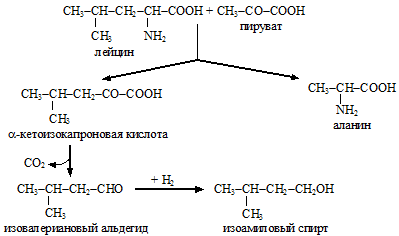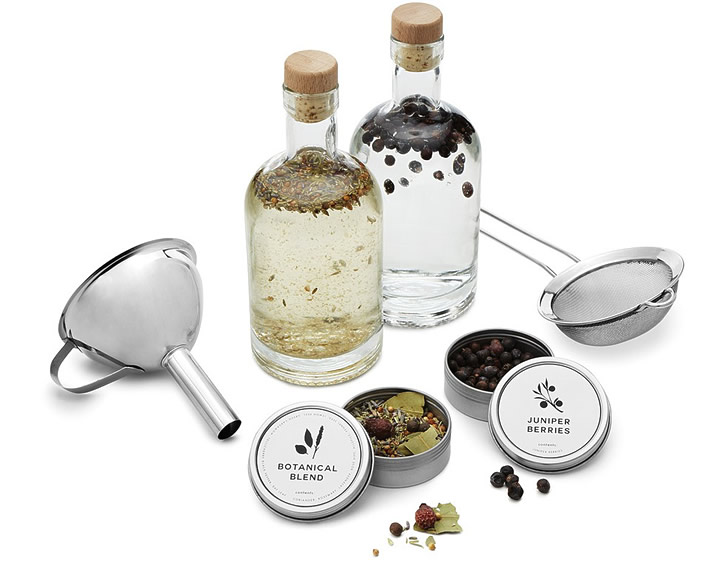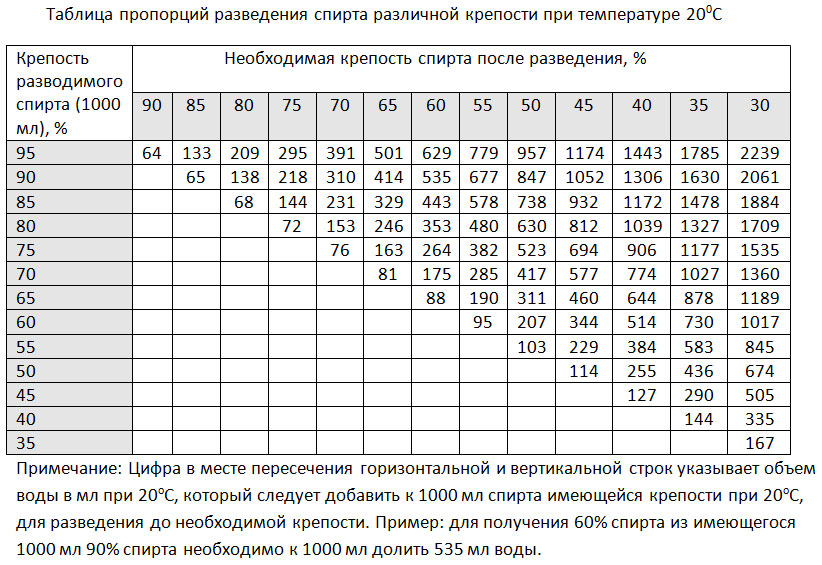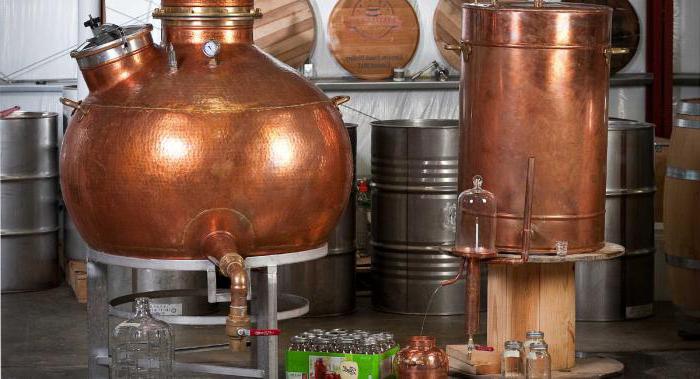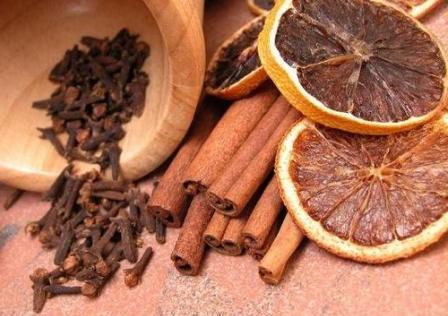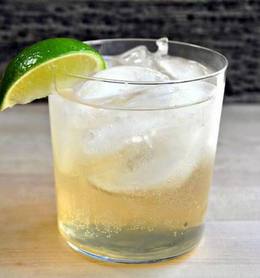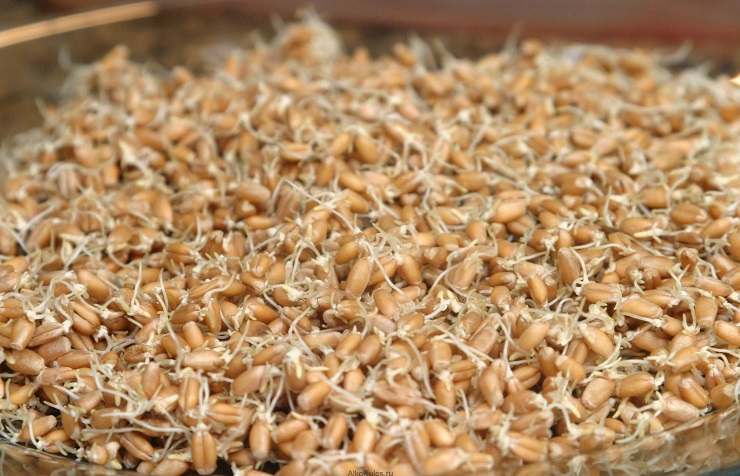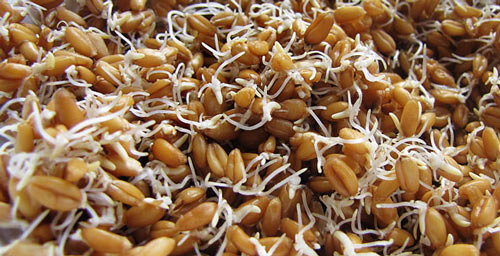Yeast Mash Recipe. How to make homemade brew of sugar for moonshine at home
Sugar mash is not a particularly difficult drink to make. It can be easily cooked at home, even by a novice. It is only important to observe the sequence of actions and the proportions of the components included in the recipe. If there is no experience in cooking, it is recommended to find a suitable recipe for sugar mash and strictly adhere to it.
Follow a few simple rules, in which case you can get a good result, even if you have not been involved in the preparation of such drinks before. The first of the rules for obtaining quality products is to maintain cleanliness. The dishes in which sugar mash will start and the room where the process takes place should be clean. Another important point is the correct choice of yeast. The room should be kept at the right temperature during the maturation of the drink. If it is higher than 35 ° C, the yeast will die and nothing will work.
How to put mash
It is worth carefully studying the recipes of mash before choosing one of them for use. There is nothing complicated in the process itself, but different opinions may arise regarding proportions. The quality and taste of the drink will depend on them, and the preferences of those who are going for moonshine or for drinking may be different.
When the brew for moonshine is made from sugar by the accelerated method, the amount of yeast will need to be increased. But do not abuse them - this can affect the quality of products. If the bregu is infused for two weeks, with the usual amount of yeast, a sufficiently clear and clean drink will be obtained. You just have to carefully pour the liquid into another dish so as not to agitate the precipitate and not leave it in the container.
The simplest brew recipe for moonshine includes the available ingredients. It is only important to observe the proportions in order to obtain the desired composition. Once the necessary experience is gained, you can change the number of components in accordance with your own taste. While it is not, it is better to use proven recipes.
The following components are included in the classic sugar mash recipe:
- water;
- sugar;
- yeast.
Often, some raw potatoes are added to the composition.
The proportions for the preparation of the drink are determined depending on what you want to get in the end. If you are going to make mash for moonshine, the ratio will be one, if drinking mash is being prepared, the other. The components are calculated and depending on the desired strength of the drink that you are going to get.
For example, if you are going to get moonshine from sugar for 10 liters of the final drink with a strength of 45 ° C, prepare the following products:
- sugar - 8 kg;
- raw potatoes - 3 pieces;
- raw pressed yeast - 0.5 kg;
- water - 20 l.
The composition can be changed depending on the tastes. Many lovers of homemade moonshine choose the ratio of ingredients not 3: 1, but 4: 1, when 800 g of yeast and 32 liters of water are taken for the same 8 kg of sugar. From this, the preparation of sugar mash is not complicated, the quality of the drink does not decrease. But the specific volume of the product to be distilled is increasing. Distillation of sugar mash in such an amount at one time is not possible at home.
To prepare the brew on yeast for drinking, you can use this recipe:
- water - 16 l;
- yeast - 400 g;
- sugar - 3.4 kg.
The output is 20 liters of drink.
To get high-quality mash from sugar, observe the following rule: do not take boiled water, but at the same time it must be clean.
Before making a drink, stock up on all the ingredients and carefully measure them. When adding sugar, continuously mix the liquid - this helps to avoid crystallization. After sugar lay yeast. Take water with a temperature not exceeding 24 ° C. Grate a couple of peeled raw potatoes and also add to the mash preparation. But not everyone introduces this component into the composition.
After all the steps have been completed, cover the container with the future lid. Its fit to the edge of the container should not be tight.
How to pick up yeast

Before you put the mash, you must correctly select and prepare the components for it. Without good yeast, the mash will not work. They are microorganisms that can live in water and use sugar for nutrition. As a result of their life activity, carbon dioxide and alcohol are formed. To create favorable conditions for microorganisms to exist, in the process of fermentation, sugar mash can be fed.
Yeast is best used raw pressed, but if not, you can take dry. But how to correctly calculate the proportions in this case is not clear to everyone. The amount of yeast is generally calculated as 1: 5. Dry ones have a slightly longer shelf life than raw ones, and in terms of quantity they need less. If you take 8 kg of sugar to make mash, you will need approximately 150 g of dry yeast in powder form.
Before making mash, such yeast should be poured with a little warm water. For 150 g of powder, it will need 0.5 liters. Stir the resulting composition until the granules completely dissolve. Then the yeast is insisted for about an hour and after that it is poured into a container where the mash is started.
The use of such yeast allows you to get a drink that is almost in no way inferior to that prepared according to the classic recipe. But when bringing it to readiness, incidents may occur that require immediate action.
How is the fermentation process going?
Proper preparation of all ingredients will ensure a good result. But one should not rely only on careful calculation - during the preparation of the mash it can behave unpredictably, therefore, careful monitoring should be established over it. 
If your mash starts to foam very much, in no case do not cover the vessel with a lid - it will be torn off by accumulated gases, and the drink may deteriorate. Keep milk or vegetable oil nearby for such an occasion. When foam appears, add oil to the container - 1 or 2 tablespoons. During the fermentation, this operation will have to be done more than once.
Watch the cooking process carefully. In most cases, the foam begins to form about a day after mixing all the components in the vessel. Manually remove it is not necessary. 3-4 days after kneading, the mash will calm down a bit. Now you can pour more water into it and rearrange it in a warmer place, where you need to maintain a temperature of 28–35 ° C. The fermentation process will continue. At this stage, the container can be closed more tightly, but this does not affect the quality of the product.
A week later, the process of clarifying the drink begins. The brighter it is, the greater the degree of readiness. You can taste it in a week or 10 days. If a sweet taste is noted, everything is mixed and left for a few more days. The answer to the question of how much mash wanders depends on the conditions in which the leaven is contained. Fermentation can take 7–13 days. If the mash has acquired a bitter taste, it means that it is ready.
Packaging for mash: which is better

To get a quality drink, the choice of containers is also quite important. In former times, mash was often placed in bulk glass bottles, aluminum jars. To date, a lot of special containers of various sizes for storing products are offered.
Before you purchase a vessel, make sure that it is suitable for storing food. If you have the first distillation, but in the future you plan to do it all the time, choose a 40 liter aluminum tank. Such a vessel is suitable for distillation of 30 liters of mash.
Mash made from sugar can stand in such a container for a long time without souring.
Experienced moonshiners by eye determine the amount of ingredients for high-quality strong and clean mash, resulting in excellent quality moonshine. Our article is for those who so far only master the skill of cooking green snakes. So, we will figure out what should be the mash of sugar and yeast, the proportions, quantity and quality of the ingredients.
The process itself, even with a stretch of the imagination, cannot be called difficult. All products are at hand, it is prepared simply and for a short time, if the moonshine still does not fail, at the output we get a clean, odorless and bad taste beverage. In the light of the huge amount of falsification, our article will be most welcome.
We follow the rules and sequence
The most important thing in the cooking process is to strictly observe the application rules and proportions. If you make a mistake in the calculations, the wort will turn sour and it will have to be poured. If you make a mistake in the amount of yeast relative to sugar, there will also be nothing good. A little sugar - mushrooms will not grow, develop and excrete vital products (ethyl alcohol, carbon dioxide and thermal energy), which affects the final taste and organoleptic. A lot of glucose is even worse. Some of the mushrooms will remain after processing and subsequently during distillation they will give the final product a terrible smell and disgusting stink even after separation of the tails and heads.

The second condition is clean, dry dishes. After each haul, it is necessary to thoroughly wash everything, starting from the container where the base is infused, and ending with the tubes in the apparatus. If you wash “through the sleeves”, mold will appear and the product will be unsuitable for consumption at the outlet. Moreover, even in the process of “mixing” sugar mash, it can turn sour, and accordingly, it will have to be redone.
The fermentation temperature is also important - from 27 ° C to 31 ° C. At different times of the year, the temperature in the room changes, so it is convenient to use a conventional aquarium heater, selected according to the volume of liquid. It is put on the desired mark and immersed in a can. We draw your attention to the fact that if the temperature is lower, the mushrooms will not develop, higher - the process of vital activity will occur too quickly without releasing the right amount of carbon dioxide.
The type and quality of the yeast matters. Bakeries are not very suitable because of their low resistance to ethanol and low strength. On average, it is not more than 11 °, which affects the volume of sugar moonshine. During fermentation, bakers emit a large amount of carbon dioxide, which causes a lot of foam. During preparation, a third of the volume is left free in the container. What is important - this type of mushroom has a characteristic smell, which is also transmitted to the drink. Someone likes an authentic spirit, but most prefer a clean and strong drink. We recommend choosing special - alcoholic yeast with minimal foaming and maximum volume of vital products. With the same success can be used wine or beer.

And the last is water quality. Ideally, this should be an artesian, rich in sodium-potassium acids. Worse than bottled. It is strictly forbidden to use boiled water - this is "dead" water, in which there is no environment necessary for the development of mushrooms.
What is a hydraulic module
Making sugar and yeast mash is best started with theory. To begin with, we will understand what hydraulic modules are. This is the ratio of sugar to water in the wort. If you meet the phrase “sugar mash with a water module of 1: 5”, this means that it is prepared from 1 part sugar and 5 parts water (large water module). There is also a small hydraulic module, where the proportion of mash from sugar is 1: 3.5. The latter option is inconvenient, since the mushrooms do not have time to process the entire volume of glucose if baking is taken.
At an alcohol concentration above 12%, bread yeast “falls asleep” and precipitates. This is an unsuitable product that must be disposed of.
Another thing is if alcoholic varieties are selected that work at the maximum concentration of ethanol. On the contrary, they need a small amount of water in the wort.

When preparing moonshine, it is better to focus on a large hydromodule (1: 5), when glucose is completely fermented, and the process itself is faster.
Often, beginning masters are guided by the average hydromodule - 1: 4, but in this case there is a risk that the yeast will not fully play out, a precipitate will appear and glucose will not be completely processed.

Alcoholic strains and turbo are preferable for a small module, since they do not require a large amount of water
In order to reduce this risk, here is a classic recipe for making wort:
- filtered or settled water during the day - 23.5-24 l;
- sugar - 6 kg;
- pressed alcohol yeast - 0.5 kg
This is a basic recipe, from which an average of 4-5 liters of moonshine will be obtained after double distillation or 2-2.5 liters of rectified (alcohol). Based on the averaged indicators and the volume of the can / keg, you can determine your volume. At the same time, note that the basis is alcohol yeast of Russian, Ukrainian or Belarusian origin. European counterparts differ from the domestic product, so when cooking, focus on the manufacturer's instructions (it is usually indicated directly on the package).
VIDEO: Sugar moonshine - what should be the right mash?
Baking Yeast Wort
For most experienced moonshiners, baking is a priority due to the characteristic aroma and aftertaste. We will not dispute such preferences, but we give a classic recipe for such a product.

- general availability - they are sold at any grocery store, are inexpensive, and are stored for a long time;
- readiness No. 1 - they do not need to be activated (started), it is enough to breed them in warm water right away, so that after a few minutes the fermentation process begins;
- instant reaction - even in the pressed product, the fungi are in the active phase, so that they begin to react immediately if the water is warm;
- authentic taste and aroma - the result is a natural moonshine with a very distinct organoleptic, which distinguishes it from vodka.
- low strength - not more than 11 °, while when using alcohol (wine or beer), the ethanol concentration exceeds 18 °;
- during fermentation, the wort must be “fed” - add a little bit so that they manage to process glucose;
- a characteristic fragrance of both the wort itself and the finished drink - but this is a subjective opinion, many, we repeat, like it;
- the volume of the foam reaches one third of the volume of liquid - this is due to the abundant emission of carbon dioxide, which is characteristic of a baking product.
We appreciated the pros and cons, and if the latter, in your opinion, turned out to be less, we proceed to determine the proportions.
One gram of sand requires 100 grams (dry granular) or 0.4 wet (pressed) yeast and four parts of water.
- artesian - 20 l;
- sand - 4 kg;
- pressed - 0.5 kg or 0.1 kg granular.
If you choose a bakery, do not put a water lock on the can for the first 3-4 days until the main wave of foam subsides. Next, install it and use it as usual.

Please note that granular is always added 5 times less than wet (pressed). This is a prerequisite, excluding the formation of sediment or insufficient volume of ethyl alcohol.
Wine and beer - how to deal with them
Today, a wide variety of yeast is sold - baker's, alcoholic wine, brewery and even wild - those that are collected from the surface of berries and cereals. Each of them is a whole colony of living mushrooms, which in a favorable environment grows and secrete vital products. It is in different proportions ethyl alcohol, carbon dioxide and heat. Depending on the variety, the proportion varies, but the composition remains unchanged.

Some home-brewers at home prefer to use wine colonies. This is a milder version of alcohol, in which the fermentation process increases to several weeks, but all glucose is processed, there is almost no residue, the organoleptic is very pronounced, which affects the final taste.

The disadvantage of wine strains is that they consume sugar slowly, so they will not work in pure form for making sugar mash - you must definitely feed the wort with fruits or cereals
- artesian or filtered water - 20 l;
- sugar - 4 kg;
- wine or beer yeast - 10 kg.
Please note that in its pure form, such a base is too scarce for a wine product, fungi develop in the presence of fructose. Periodically, in the process of ripening, the wort will have to be “fed” with squeezes or fresh fruits, fruit juices, jam, jam. It is not worth adding a lot of enzymes, the main thing is that development continues.
From the very first day of the preparation of the wort, you can put on a keg or can a water lock - foaming in this variety of the colony is minimal.
Given the fact that fruits and / or cereals will be used in the manufacture of mash, before you drive it away, you need to filter and clean it with bentonite.
The finished drink will turn out to be strong, clean and pleasant to taste, but without an authentic bread smell. And it will be the right moonshine!
VIDEO: Secrets of the master - the proper preparation of the right mash
It is difficult to overestimate the popularity of home-made moonshine from sugar mash - it is driven by everyone who has a factory or home-made unit. There is a logical explanation for this - sugar is available, it is easily and quickly fermented, the finished product is clean. The whole process takes no more than 2 weeks. Most recipes differ only in the proportions of the main ingredients, so we will give a classic on inverted sugar, according to which both experienced luminaries and novice distilleries can prepare a drink.
Preparatory process
Immediately, we note that the recipe for moonshine made from sugar and odorless yeast involves the use of only clean dishes, starting from the container for mash and ending with the unit itself.
Ideally, all containers, bottles and pans should be washed with hot water (over 60 ° C) and wiped dry. Only in this case can we guarantee that the finished product will not smell of foreign impurities, and the mash will not turn sour even before the time comes to distill it.
For fermentation you need a transparent bottle with a volume of 15-20 liters with a wide neck.
You will need an aquarium heater - with its help, the fermentation temperature is maintained at around 27-30 ° C.
You will also need:
- gauze for straining;
- a coal column for filtering moonshine at home from a plastic container and charcoal;
- corking bottles for the finished drink.
Ingredients
Quietly and without haste, you can prepare a quality product only when all the necessary items and products are at hand.
- Sugar - 6 kg

Sugar - the most common granulated sugar is used to make the classic moonshine recipe
The usual one that can be bought at any store. Making mash for moonshine from reed, brown and other analogs is impractical, since the result in all cases to taste, smell and strength will be the same. But at the fermentation stage, problems may arise.
- Water - 24 liters

Fermentation of mushrooms depends on the quality of water, therefore, its choice should be taken very carefully. Depending on the origin, you can use (in descending order of benefit):
- artesian;
- spring;
- purified;
- bottled;
- water piped for 2-3 days.
- Pressed yeast - 600 gr. or dry 120 gr.
The amount of dry yeast may be different, depending on the degree of dehydration. The package usually contains information on the proportions relative to the pressed and volume recommendations.

- foams less;
- fermentation is faster - 3-6 days instead of 10-12;
- do not die at a high alcohol concentration (live up to 18 °);
- with rupture of the shell (heating) less fusel oils are released.
You will learn more about selection rules in the article ""
- Citric acid - 25g.

This product is needed to make inverted sugar. Replace with lemon juice is not necessary, it is enough to use dry powder.
- Bentonite - 4 tbsp.
This is a natural product made from white clay. It is necessary for absorption and clarification of mash immediately before cooking. Classic moonshine from sugar and yeast will not work if you do not lighten the mash first - in the future it will affect the taste and aroma.

On the Internet you can find recommendations on the use of cat litter fillers (bentonite is also used for their production). But from experience we say that it is better to buy one that is designed for winemaking - there are no third-party fragrances in it.
Inverted Syrup Technology
It has long been proven that it is better to make mash from inverted sugar, rather than ordinary sand. The fact is that the speed and quality of fermentation depend on the time spent splitting this product. If mushrooms consume inverted syrup, splitting into simple monosaccharides - glucose with fructose - occurs faster, respectively, less time for fermentation. In addition, when heated, harmful microorganisms die, which can lead to wort souring.
For the preparation of mash, it is not necessary to make an inverted syrup, but if we want to get a recipe for moonshine from sugar and odorless yeast, it is better not to ignore this process.

What do we have to do:
- On the stove, heat 3 liters of water almost to a boil - a white smoke will leave the surface.
- Pour 6 kg of sugar and stir until completely dissolved. Try not to stop interfering so that the mass does not burn.
- Bring the syrup to a boil and reduce the heat to a minimum, removing the foam from the surface all the time.
- The syrup should boil for 10 minutes, after which citric acid is poured very carefully. Be careful - a lot of foam will appear.
- Cover the pan and cook for an hour. Cool in a bowl of cold water.
How to make mash for distillation
We proceed to this stage after the syrup has completely cooled down - it will not be too thick, the consistency is more like honey.
Of the products that we indicated on the recipe for moonshine from sugar and odorless yeast, a total of about 30 liters of mash is obtained. If you don’t have one large fermentation tank, mix all the ingredients in a saucepan and carefully pour them into the bottles you have.
- First, dilute the inverted syrup with a small amount of warm water so that it dissolves.
- At this time, we make yeast yeast, for which we dissolve 0.5 kg of sugar and all yeast in a liter of water. It is necessary to wait until the fermentation starts and a cap of foam appears on the surface.
- We heat the rest of the water to 26-28 ° C, dissolve the previously diluted inverted syrup and yeast from it. All this is mixed well and poured over the eggplant or left in the same container.
- The bottles are covered with a lid with a water seal or a rubber glove, in one or two fingers of which small holes are made. This is necessary for the removal of carbon dioxide formed in the process of fungal activity.
There should be room for reaction in the bottles - mash is poured only on ¾ of its volume.
- Transfer the entire container to a warm, dark room and turn on the aquarium heaters at around 26-31 ° C - this is the optimal mode for the growth and development of fungi. It usually takes 4-12 days to make the brew for moonshine, depending on the type of yeast.
- During this period, the mash is mixed twice a day to remove excess carbon dioxide and connect all products, including those settling to the bottom.
VIDEO: Braga from sugar, yeast and water - a recipe for sugar moonshine
Readiness Check
With experience, you will already learn how to determine “by eye” when the mash has already prepared for distillation, but first you will need to correlate it with the following signs:
- bitter taste - if the yeast worked qualitatively, sugar will not remain in the mass, and the liquid will acquire a bitter aftertaste without sweetness;
- carbon dioxide odor is not released - the glove has fallen off or the hydraulic lock has stopped bubbling;
- clearly distinct separation into layers - the top is very light and noticeably precipitated;
- no light hissing is heard even with stirring;
- if a match is lit right above the surface, it will not go out;
- the alcohol aroma is clearly perceptible.
Little coincidence of 1-2 signs, they should coincide all, so that you can confidently proceed to the next stage.
VIDEO: The classic recipe for moonshine from sugar and yeast odorless
Degassing and lightening
At this stage, you need to remove as much carbon dioxide as possible - its concentration greatly affects the organoleptic properties of the finished drink. Degassing is carried out very simply - by heating and stirring.

First you need to carefully drain the fermented composition without affecting the sediment. It is best to use a thin hose for this - lowered into a container, sucked from the other end and wait for the clean layers to merge.
Next, put the pan on fire and heat to 50 ° C - not higher, so that the evolution of alcohol-containing vapors does not begin. When heated, CO2 begins to come out actively, and by stirring this process can be accelerated. After 10 minutes, you can remove the pan from the heat and proceed to clarification.
To do this, first grind the bentonite and it in very hot water, until you get a dense mass of consistency resembling village sour cream.
For 1 liter of mash use 15 gr. bentonite.
Pour bentonite in the mash, shake well or mix and leave for one and a half days. After that, it is also carefully poured into the distillation cube, and the sediment is thrown into the bin.
Do not pour the mass of bentonite into the sewer - reacting with it, it is collected in cement pieces that clog the pipes.
VIDEO: Description of the classic way to lighten mash
The first distillation of moonshine
At this stage, the task is to carefully separate the moonshine body from the head and tails, where fusel and other toxic impurities are concentrated.
We have already repeatedly told what heads and tails are, and how to cut them off correctly (read ""), so now we will move on to practice.
We make moonshine from sugar and yeast classic, therefore, we carry out a double distillation with intermediate purification.
At the first distillation, we heat the cube to 86 ° - in the first 15 minutes on a large fire we bring to 65-68 °, then we reduce the fire to a minimum and raise it to 86-88 ° С. The slower the heating occurs in the second stage, the more impurities will move away.
The first liquid coming out of the refrigerator is the head. We take them in the amount of 180-200 ml (30 ml per kilogram of sugar), but periodically take droplets and rub them on the wrist. The heads are cut off until a sharp smell of acetone is felt.
After cutting off the heads, the sucker is washed and the acceptance capacity is changed.
The next is raw alcohol - the body or heart of moonshine. We collect it already in the fortress. On average, one kilogram of sugar produces 0.9-1.0 liters of alcohol, respectively, we should get about 6 liters of body. Periodically measure its strength with an alcohol meter. As soon as it fell to 40 °, we proceed to cutting off the tails. We also collect them in a separate jar. There are not so many tails as goals, but it is important to take them away before proceeding with the second distillation.
Cleaning between distillations
Home brewing involves several stages of cleaning:
- cooked mash;
- between the first and second distillation;
- after the end of distillation.
In this case, we are talking about intermediate cleaning to eliminate third-party elements. An ordinary coal column is suitable for this, when the bottom is cut off in a bottle, pieces of charcoal are poured tightly, this funnel is inserted into another container and alcohol is passed through it. Fast, convenient and very effective. If you know and use other cleaning recipes, you can do it as you wish.

Re-distillation
Before pouring crude alcohol into the distillation cube, it is diluted with water to 20 ° - all this is done to maximize the removal of fusel oils and impurities.
Further, the whole process is completely identical - gradually heat up the liquid, collect the heads, body and tails. The head volume is exactly the same - 200 ml of tails are collected from 6 kilograms of sugar from which the mash was prepared.
The body volume is about 6 liters, depending on the intensity of the refrigerator (the colder the water in it, the higher the productivity).
Tail clipping is an optional step. You can simply stop the distillation as soon as the strength of the body drops to 40 °.
At the second distillation, aromatic herbs and spices can be added to the sucker to give the drink a light aftertaste.
Beverage Refining
Each moonshiner has his own arsenal of recipes for cleaning moonshine. We practice the good old coal filtering. As an option - activated carbon, but it is better to use wood. It is fast enough and very effective, but you can also use potassium permanganate, milk, vegetable oil, etc.
Breeding moonshine with water
This is needed for:
- reducing the strength of the finished drink from 80-88 ° obtained by distillation to 40 °, perceived by the body;
- breaking molecular bonds and more complete purification from harmful impurities.
Diluted with water according to the formula:
|
(A / B) x C - C \u003d D |
- A - the strength of the finished drink;
- B - required strength after breeding;
- C is the volume of the obtained product;
- V is the desired volume of water
If we got 6 liters of moonshine with a strength of 75 °, then for breeding up to 40 ° you will need 5.25 liters of purified or artesian water.
This is the final stage of home brewing. After which the drink is simply bottled, closed and allowed to infuse for a week.
After that, you can make different derivatives - the legendary Italian or strong - or just enjoy a pleasant moonshine without the characteristic fusel odor.
VIDEO: How to cook moonshine from sugar and yeast
A strong home-made alcoholic drink, called moonshine, is distilled from special alcohol-containing raw materials. The classic distillation product is sugar mash. When using mash for moonshine made from sugar and yeast, you can completely get rid of the unpleasant smell and taste. Good color and lack of turbidity also provides mash on sugar. The cooking technology is simple and accessible to everyone, and greatly simplifies and diversifies home brewing at home.
Containers and ingredients
Sugar mash does not require a special container, ordinary, regularly used for fermentation will do. When choosing a container, several key factors should be considered:
- The size;
Tare is selected by the amount of wort, which should fill no more than ¾ of the total volume. The remaining space will be filled with foam formed from fermentation. Excess air in too large a container adversely affects the quality of the finished product.
- Material;
Special containers made of food-grade plastic are popular. It is very convenient to use a cover with a water lock, but you can loosely close the usual one for the passage of carbon dioxide.
In second place are stainless steel tanks that do not react with fermentation products. They are more expensive than plastic, but durable and do not lose their valuable qualities.
In no case should you use aluminum containers. Yeast infested mash has an acidic environment and easily reacts with active aluminum.
The most common containers are glass. Large selection of size (5-15 liters). The disadvantage is high light transmission, because of this, the bottles with braga are stored in the dark, and wrapped in a blanket to maintain the temperature. Short-lived, easily breakable material.
Making moonshine brew from sugar and yeast requires a careful selection of ingredients.
- Dry quality sugar.
- "Alcohol" yeast.
The packaging contains clear instructions for use. They cost a little more, you can buy them only at specialized retail outlets or order online. In the absence of the possibility of purchase, ordinary baker's yeast is used. Dry ones give a small foam formation. But the degree of strength from their use is reduced.
- Purified / filtered water.
The right amount of products guarantees the quality of the drink.
How much yeast is needed per 20 liters of mash
To obtain 20 liters, use the available yeast in the prescribed proportions:
- If alcoholic yeast, then 65 gr;
- If dry baking, then 250 gr;
- If pressed ½ kg.
Sugar mash on dry yeast takes longer to ferment. If there is no alcohol available for brew from sugar, it is better to do it on pressed yeast.
The best yeast for mash is alcohol.
The most common is the classic recipe with alcohol yeast:
- 20 liters of purified / filtered water;
Chlorinated tap water will not work. Also do not use boiled, in it insufficient amount of salts and minerals.
- 6 kg of sugar;
- 65 g of alcoholic yeast;
Such a quantity of yeast provides a high degree of strength of the mash and the moonshine obtained from it.
Correctly counting products
Moonshine from sugar does not require the addition of additional components. Sugar and yeast mash likes strict proportions. Three liters of water are consumed per kilogram of sugar (water module 1: 3). When using alcoholic yeast, the hydromodule becomes 1: 4/1: 3,5. With this proportion, the strength of the mash is from 11 to 16 percent of revolutions.
The sugar and yeast mash recipe contains classic and easy-to-calculate proportions:
- One measure of sugar;
- 0.1-0.4 yeast measures;
- Four measures of water.
Observing this ratio, it is impossible to make a mistake when calculating any amount of ingredients. Saving on sugar should not be, as this will reduce the strength of the mash, and therefore the distillate. The right dosage is the key to good quality.
Component Mixing
Moonshine from sugar will turn out to be of high quality, provided that the ingredients for the mash are properly mixed.
First you need to activate the yeast: in two liters of water heated to 35 °, 100 g of sugar is dissolved, 65 g of yeast is stirred. Leave to "ferment" for 2 hours. It is better to activate the yeast in a deep dish so that the resulting cap from the foam does not get out of the dish.
During aging, sugar is diluted in water. The main secret is the correct addition to warm water. It is not added immediately, but in portions (in several stages), stirring well. The density of sugar in the wort is good to check with a sugar meter, which, if sufficient, shows from 18% to 20%. After "fermentation" the yeast is added to the wort. Set aside in a warm place for one to two weeks to mature (temperature 28 ° -32 °). At the same time, the mash can withstand a slight decrease in temperature, but not an increase. If the temperature exceeds 35 °, the yeast will die, fermentation will stop. Every day, the mash is stirred once or twice to release carbon dioxide.
Readiness is determined by the unsweetened bitter taste, the smell of alcohol and the absence of bubbles of carbon dioxide. The most accurate information is determined by a sugar meter, which, when fully “played back”, will show zero.
Braga is an alcohol-containing liquid obtained by fermentation of any carbohydrate-containing raw material ( we have sugar) with the addition of yeast and water, for further processing into moonshine.
Criteria for obtaining high-quality sugar mash:
- sugar and yeast mash
- high-quality yeast
- lack of impurities in water and sugar
- ability to correctly determine the moment of maturation of mash
In moonshining, from sugar mash, we try to get - a maximum of alcohol per spent sugar!
Sugar mash proportion
* along with top dressing.
Water: Sugar: Yeast
300:100:1
Theoretical alcohol yield: 0.67 liters (0.538 kg)
Proportions may vary only for yeast. The ratio of sugar and water is checked by theory and practice, change only at your own peril and risk.
Alcohol yield
Let us dwell on chemical calculations - this will be considered an ideal alcohol yield.
Simplified formula for fermenting sugar into alcohol:
1 * Sugar + 1 * Water \u003d 2 * Glucose \u003d 4 * Alcohol + 4 * Carbon dioxide. (molecules)
With one sugar molecule we get four alcohol molecules.
We substitute the atomic masses of the substance.
342 + 18 \u003d 2 * 180 \u003d 4 * 46 + 4 * 44. (g / mol)
With 342 g / mol of sugar we get 184 g / mol of alcohol.
From the formulas we obtain the ratio of the yield of alcohol from sugar: 184/342 \u003d 0.538
Alcohol is lighter than water, for calculation in liters: 0.538 is divided by the density of alcohol 0.79 kg / l, we get 0.67 liters of alcohol per 1 kg of sugar.
In practice, we won’t get the perfect solution. Fermentation does not occur immediately - part of the alcohol will be lost. In practice, 0.55-0.60 liters of alcohol are obtained from one kg of sugar.
Options due to which possible loss of raw materials (sugar) and a lower coefficient of alcohol output in Braga to spent raw materials.
- The proportions of the composition of the mash wort are not respected.
- Too much water:
slowing down fermentation, the risk of "weed" fermentation-rotting increases.
- Too much sugar:
yeast will convert only part of the sugar into alcohol and die. As a rule, yeast dies at 9-12 degrees of alcohol. If there is a lot of sugar in the wort - 40 percent or more, there will be no fermentation at all. - Not high quality yeast.
- Yeast is not enough nutrition:
slowing down fermentation or its complete absence.
- Presence of garbage yeast and impurities in raw materials:
The wort begins to ferment not in the alcoholic way - to rot, milk fermentation. - Failure to comply with the rules for the care of braga.
- Fluctuations in temperature, not correct mash ripening temperature.
Overexposure, underexposure of mash.
- Air access:
They did not give air at the initial stage, the yeast will not be able to begin to develop.
After the start of fermentation, the access of oxygen-air was not blocked - vinegar fermentation will develop. When the emerging alcohol will be processed into acetic acid.
Sugar Yeast
What yeast is best used for mash? Briefly answer this question: ordinary, pressed, bakery.
Let's try to explain why.
The conversion of sugar into alcohol is carried out by yeast. These are living organisms, and for their life they require the fulfillment of a number of conditions.
In our case, it is:
- nutrient medium.
- temperature condition.
- necessary chemical elements for nutrition and reproduction.
- Everything is clear with the nutrient medium, sugar and water.
- Temperature condition.
For the initial stage of reproduction, the recommended temperature: 26-32 degrees.
When breeding begins, our mash begins to wander (foam, bubbles), the temperature should be lowered to 22-26. At temperatures above 28 degrees, “garbage” yeast bacteria multiply well (they will hurt us greatly). At below 22 degrees, the activity of the yeast we need will slow down (fermentation will slow down). At below 10 degrees, extinction will begin - fermentation will stop, the yeast will begin to die off and precipitate.
- Necessary chemical elements for nutrition and reproduction.
The above formula for the conversion of sugar into alcohol is very simplified and in nature everything is much more complicated. We will not clog the article with all the reactions of biochemical fermentation, but we will highlight that: for the conversion of sugar into alcohol, yeast in food reactions requires phosphorus, and for multiplication, nitrogen. Many beginner spirits begin to grow wiser with top dressing, everything is done in pressed yeast (read the guest). There are necessary microelements in the composition of pressed baking yeast.
Special Yeast for Sugar Mash
For home brewing, special alcohol-wine yeast is sold. Under sugar mash, they are not very convenient: they are much more expensive - pressed, require top dressing, the positive qualities of yeast in sugar brew are not realized.
Positive qualities of spirit yeast:
- alcohol resistance - 16-18 against 9-12 bakeries. Given that we are going to distill the resulting mash, the initial fortress is not very important.
- Additional tastes that give special. yeast is needed for fermentation on fruits or vegetables or cereals. But sugar, and even "elite yeast" will not give special tastes or aromas.
Step by step production of sugar mash
(proven practice)
Below is a step-by-step description of how to make sugar brew for moonshine.
1 We calculate how much moonshine we are going to get:
- 10 liters of 50%.
2 Under the estimated number of moonshine, we calculate the raw materials:
- 10 liters of 50% moonshine is 5 liters of alcohol. 5 liters of alcohol require 8.5 kg of sugar. ( see section alcohol output from sugar)
- For sugar, we calculate (according to the proportions) the rest of the raw materials.
Total: 25.5 liters of water: 8.5 kg of sugar: 85 g of baker's yeast.
3 Under the raw materials, select the container:
- In terms of volume, we need 27l + 20% stock for foam \u003d 33l containers.
At home (in small houses and apartments), the most convenient container for mash is 10-5 liter glass cylinders. They are convenient to wash, they are optimal in terms of occupied space and ease of carrying, neutral to braga - do not give harmful impurities.
Total will be needed: three 10 liter and one 3 liter cans.
4 Take care of the can closures
Choose from two options:
- water lock: a plastic lid, insert the silicone tube into the lid, the entrance to the lid for sealing (can be clay) the other end into a small jar of water.
- a punctured glove mounted on the throat of a can.
(water trap is preferred)
5 We buy raw materials:
- sugar - we take refined sugar without impurities.
- yeast - baked-pressed according to GOST, we look at storage.
- water - you need clean, do not boil, without bleach. The option will go: water, passed through the filter, 4 hours left standing - checked for smell.
6 Preparing the wort:
- We heat water (40 degrees, to the touch like bathing water), dissolve sugar.
Overfill (get rid of solid sediment).
- In the cooled wort (degrees 30, warm to the touch), add and stir the yeast.
7 Start fermentation mash:
Cooking mash from sugar and yeast, this stage takes a special place.
- Pour the resulting wort onto a clean container, do not forget to leave an air gap (for 10 liter cans, two liters per volume).
- We cover with gauze from above (not much air access is needed, but there is no litter and insects).
- We put Braga in a warm place (optimally 26-30 degrees). Without direct sunlight and temperature fluctuations.
- We look after the braga (we need to achieve full intensive fermentation).
As the formation of a peel-film on top, mix the contents (every 2-6 hours)
- After about 16-48 hours, the wort begins to ferment intensively - carbon dioxide is released from the entire wort, and not from the crust or sediment. Ripening time depends on the purity of the yeast and the temperature regime ( proportions took the right) Go to the next step. Do not overexposure the initial fermentation if two days have passed, and there is no intensity - a reason to sound the alarm.
To determine the moment of transition to the next stage, a visual observation is enough. You can taste it - bittersweet. A rotten aftertaste, not a pleasant smell - they were mistaken somewhere, do not expect a good mash.
8 Fermentation of Mash:
- in a container we block air access, we put locks (gloves, a hydrolock).
- lower the temperature to 22-25 degrees.
- wait until the end of intensive fermentation - 5-10 days. Signs: the foam settles, 1-2 bubbles are released in the water seal in 10 seconds (the glove falls off), sediment becomes visible at the bottom. Go to the next step.
9 End of fermentation:
- completely, tightly close the containers with the brega and transfer to a cooler place with a temperature of 12-15 degrees.
Slow fermentation and precipitation of yeast will take place.
- wait 2-3 days.
We get the answer to the question: how much mash ferments on sugar - the full cycle of fermentation takes 6-14 days.
10 Preparation of mash for haul:
- gently without blasting the sediment, pour into the container.
It is convenient to use silicone hoses:
They put the jar on a hill, pour it through the hose into a container. We leave the top and bottom of the sediment mash.
Sugar mash for the moonshine is ready!
Recipes for home brew made from sugar and yeast are not very different from each other, changing: packaging, the procedure for preparing wort.
Moonshine on sugar has its own specific taste, and distillation will have to fight with it. It is convenient to make various drinks from sugar moonshine in the recipes of which the taste of mash is clogged, for example: tinctures, liquors. In its pure form, moonshine from sugar loses to the taste of cereals.

